Local Memo: Google Tests Review Carousels and Photo-First Profiles

In this week’s update, learn about Google’s new review carousels and photo-first profiles; Google’s decision to automatically delete visits to abortion clinics; a guide to Twitter’s ranking factors; identity filters in Google Shopping; how brands can best engage on social issues; and an inflation-based spike in grocery store app usage.
Google Tests Review Carousels and Photo-First Profiles
Two more field experiments have been recently spotted in Google’s local results. The first is a review carousel discovered by Celeste Gonzalez, which appears, in her example, further down the SERP from the local pack, under the heading “Find places through reviews.” The placement and wording echo those of the “Find places through photos” feature which was spotted for the first time earlier this year. In both examples, Google is extracting content – photos and reviews – from the business profile and showcasing it prominently in search as the means of making a first impression on the user. It’s unclear how these results are triggered.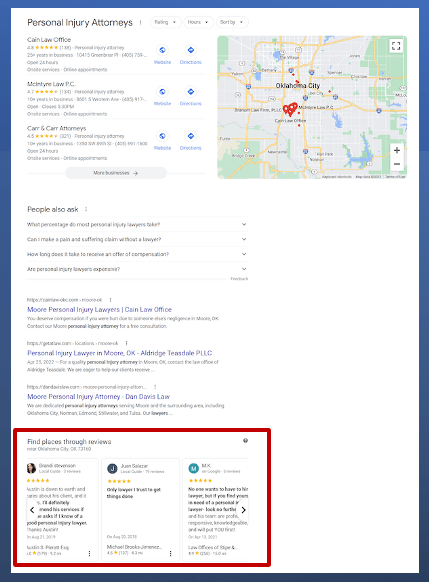
Courtesy Andy Simpson / Near Media
The second experiment is a version of the business profile that appears in the local finder and has some unusual characteristics, including prominent placement of a gallery-style display of thumbnail photos with rounded corners, as well as a Reviews tab that brings review content further up the page than normal. As with review and photo carousels, Google seems to be experimenting with various ways of showcasing the available content in listings, presumably to measure whether these variations will incentivize the user to spend more time on the page or to take actions such as requesting directions or calling the business.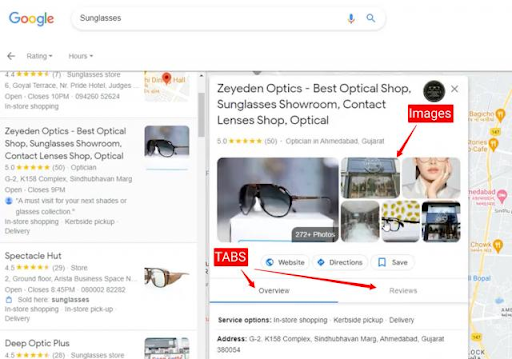
Courtesy Punit / Search Engine Roundtable
Google Will Auto-Delete Visits to Abortion Clinics
Google has taken steps to protect user privacy in the wake of the Supreme Court decision to overturn Roe v. Wade and amidst concerns that data could be used against citizens of states that ban or restrict access to abortions. Google’s first move is to add a feature that will automatically detect and delete from a user’s Location History visits to certain medical facilities whose services might be considered highly sensitive – not only abortion clinics but also domestic violence shelters, fertility clinics, weight loss clinics, and others. Google-owned Fitbit will also give users greater flexibility over managing and deleting personal data including menstruation logs. In a related statement on law enforcement demands for personal information, Google says the company is “committed to protecting users against improper government demands for data,”A Guide to Twitter’s Ranking Factors
Chris Silver Smith offers a comprehensive guide to the factors in Twitter’s algorithm that determine the ranking of tweets in user feeds. He notes that Twitter used to rank content on a purely chronological basis, but switched to algorithm-based ranking in 2016. Today’s rankings still start with a newest-first chronology of tweets from one’s followers, but Twitter then re-ranks tweets by predicting how interesting each tweet will be to the user. Twitter also shows each user some tweets from accounts the user is not following, based on what it calls a “connection graph.” Actions such as following, subscribing, liking, or tagging create connections in the graph, and help Twitter to determine which posts outside your follower group will be the most engaging. More distantly, the connection graph helps the algorithm to showcase tweets based on their general topic or their similarity to tweets the user has liked. The article goes into great detail about a host of factors that, based on Twitter’s patents, may be used to rank tweets. These include recency; images and videos; interactions such as likes and comments; impressions; the length of the tweet; previous author interactions; topics mentioned; time; location; language; and several others. Smith recommends several tactics to marketers based on his analysis, such as creating posts that encourage interaction and are therefore more likely to be seen by a larger audience.Google Adds Identity Filters to Shopping
Mirroring recent changes to Google Business Profiles, Google has added a “Discover” filter to the Google Shopping interface that lets users filter results by identity-based attributes such as Black-owned, women-owned, veteran-owned, and Latino-owned. Checking one of the boxes filters Shopping results so that only matching businesses are shown. As I reported last week, Google has had various identity attributes in GBP for some time now and just recently added LGBTQ+ owned to the list. It’s unclear when the identity filters in Google Shopping first appeared.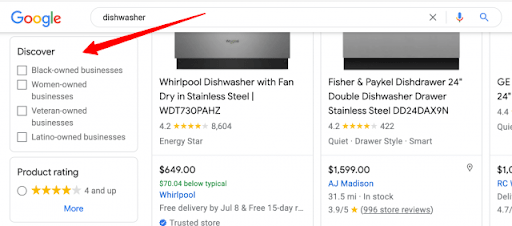
Image courtesy Search Engine Roundtable
How Brands Can Best Engage on Social Issues
Twitter has produced a study in collaboration with OMG Research that explores the role of brands in social and identity-oriented discussions on the platform. The report states, “When it comes to serious matters, such as racial justice, gender equality, and climate change, people on Twitter not only welcome brands into these conversations but expect them to speak up on behalf of their followers and others who share their values.” Two out of three survey respondents agreed that brands have an influence on the way people express their identities, with racial, political, and gender identities being ranked as important by the greatest number of respondents. Users find it especially relevant for brands to speak out on issues when they are directly related to the brand’s industry or when brands respond not just with words but with meaningful action. Topping the list of issues that users want brands to take a stand on was climate change, with 46% expecting brands to speak out.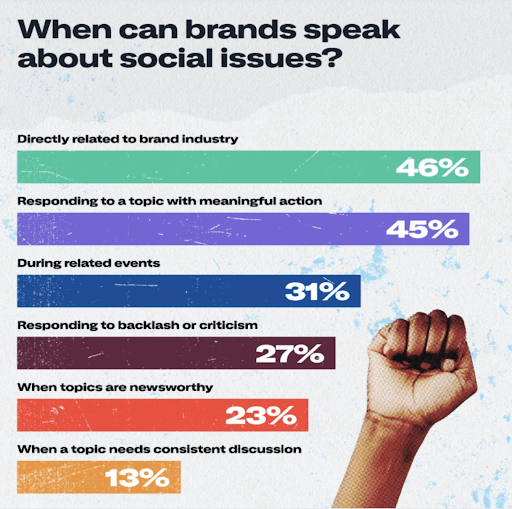
Courtesy Twitter / OMG Research
Inflation Drives Grocery App Usage Up 77%
Increased food prices due to inflation are driving more users to grocery apps, according to research from Apptopia. App usage was up 77% in May compared to the same time in 2021, with reviews mentioning the word “coupon” up 75%. When all data is in, sessions in grocery apps are predicted to have gone up 30% for Q2 2022 compared to the previous quarter. Consumers are using apps these days to seek out rewards, coupons, and better prices, but their needs are not being consistently met by many grocery apps according to the study, with half of the top ten apps receiving negative scores for coupons.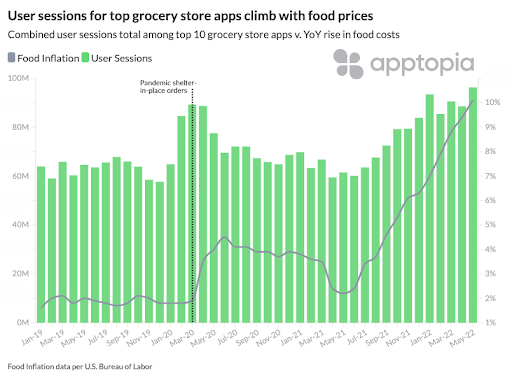
Subscribe to Local Memo!
Signup to receive Local memo updates and the latest on localized marketing, delivered weekly to your inbox.




